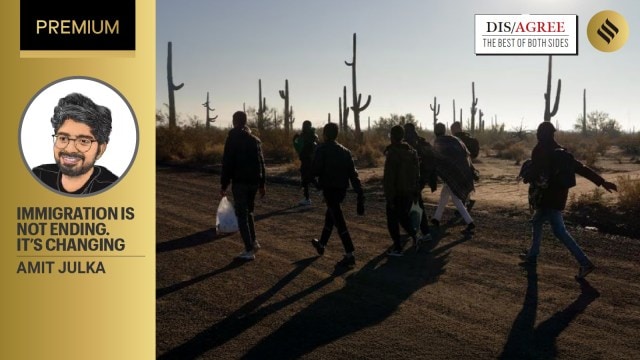
For almost a decade now, global politics has churned around a singular issue – migration. While migration is usually seen as a recent phenomenon (and an exception), it has been a norm for most of humanity — at some point in history, someone from our ancestry has migrated. Thus, to talk about its origins is to acknowledge the limits of memory — a native place is the point beyond which we can no longer trace our story of our migration(s).
That being said, there was something unique about the specific form of migration the world has witnessed in the last few decades. Specifically, this was the migration caused by the rise of neoliberalism. The end of the Cold War and the globalisation of the free market not only meant loosening of flows of capital, but also human bodies. Secondly, this was also the time of the rise of the service economy and informational capitalism. This meant that in core economies (the first world), companies needed access to cheaper, skilled labour from the periphery, that is, the developing world. Thus, it is not a coincidence that the H1-B programme, the sustainer of middle class dreams in countries like India, was launched in the year 1990, just as America was entering the unipolar era. Conversely, this was also a win-win for developing countries – it provided a much-needed outlet for their talented youth especially at a time when domestic jobs in these sectors were lacking.
However, this is a very lopsided picture of immigration — one that involves a particular set of Anglophone countries and caters to the experience of a certain class (skilled Indian migrants typically from the middle/upper-middle class). Much before techies from Bangalore were making a beeline for the Bay Area, millions of unskilled and skilled workers from South and Southeast Asia had discovered the promise of the Gulf petro-states in the 1980s, where the proportion of migrants eclipsed the local community, with the caveat that unlike their counterparts going to the West, they knew that such a migration was always a temporary affair, lasting anywhere between five weeks to 50 years. Then there is undocumented migration — such as that from Central and South America to the United States, or from North Africa to Europe. The latter, with its images of people cutting across fences and crossing the ocean on poorly constructed boats, has fuelled the rise of anti-immigrant politics across the global North.
This immigration wave that we experienced (from 1990-2020 approximately) was also one such cycle in history. For instance, after the destruction of Europe in World War II, cheap labour was needed to rebuild the factories, railroads, and ports, and, as a result, millions of erstwhile colonial subjects were “let in”, to fuel this demand. Soon after though, the racist backlash followed — excrement was thrown on the shops and bodies of the outsiders, and (relatively) native Anglo-Saxons moved out of immigrant neighbourhoods such as Southall or Brick Lane in London. Hence, by the 1960s, England had already paused the freedom of mobility within the commonwealth, and the world once again seemed to be moving towards an era of restricted migration. A similar politics impacts domestic migration. For instance, in Punjab, there has been a rise in hatred against migrants from UP and Bihar, even as Punjabi (and other South Asian) immigrants to Canada and the global North are themselves caricaturised as “Pajeets” in online discourse. This online hate has also resulted in increased physical violence against Indians, such as the gruesome beheading of Chandra Nagamallaiah in Dallas.
On a macro-scale however, this is where the logic of capital is important to understand. The rise of industrial capitalism has led to a double movement — the opening of immigration to increase labour supply (and thus keep domestic wages in check) but also increased reliance on xenophobic politics to prevent consolidation among the working class. This has meant that there is a contradiction — free markets need immigrants to keep themselves running, but this also fuels xenophobia and cultural nationalism in host societies, and that leads to a phase of increased cultural and economic anxiety over immigration. As a result, over the last century, the world has gone through these periodic boom-and-bust cycles of immigration.
So — does this mean an end of the immigrant’s dream? The answer is simultaneously, yes, no, and for now. Let me explain. For us, sitting in South Asia, who have always looked towards the West as a destination for upper mobility, that dream may have hit a temporary pause for the next few years. However, here, the picture gets more complicated. While countries like the United States are closing down, nations with falling birth rates like Japan are welcoming migrants. So, on a global level, what we may be looking at is not a macro-decline, but a shift in flows. And yet, there are bigger problems on the horizon. While the last century has been dominated by the secular advance of industrial and financial capitalism, the next few decades could also be the era of ecological collapse thanks to climate change. This means that the boom-and-bust cycles of the past may be irretrievably broken — and what we may now have to deal with is forced migration on account of climate change. Climate change and mass migration may permanently re-arrange societies, economies, and state capacity. Thus, generations ahead may no longer have the comfort of the “wait for a few years, this will pass”.
The writer is an assistant professor of International Relations, Ashoka University. Views are personal